Few garden plants combine elegance, resilience, and versatility as beautifully as the Black Lace Elderberry (Sambucus nigra ‘Black Lace’). With its striking, dark purple-black foliage and soft pink blooms, this ornamental shrub is a true showstopper—earning its reputation as one of the most dramatic and rewarding plants for home gardens.
Inspired by the YouTube video “Black Lace Elderberry in Full Glory!”, this article dives deep into everything you need to know about this remarkable plant: from its captivating appearance and easy care routine to its practical uses in the garden and kitchen. Whether you’re an experienced gardener or just starting out, the Black Lace Elderberry will elevate your landscape with color, texture, and year-round interest.
What Is the Black Lace Elderberry?
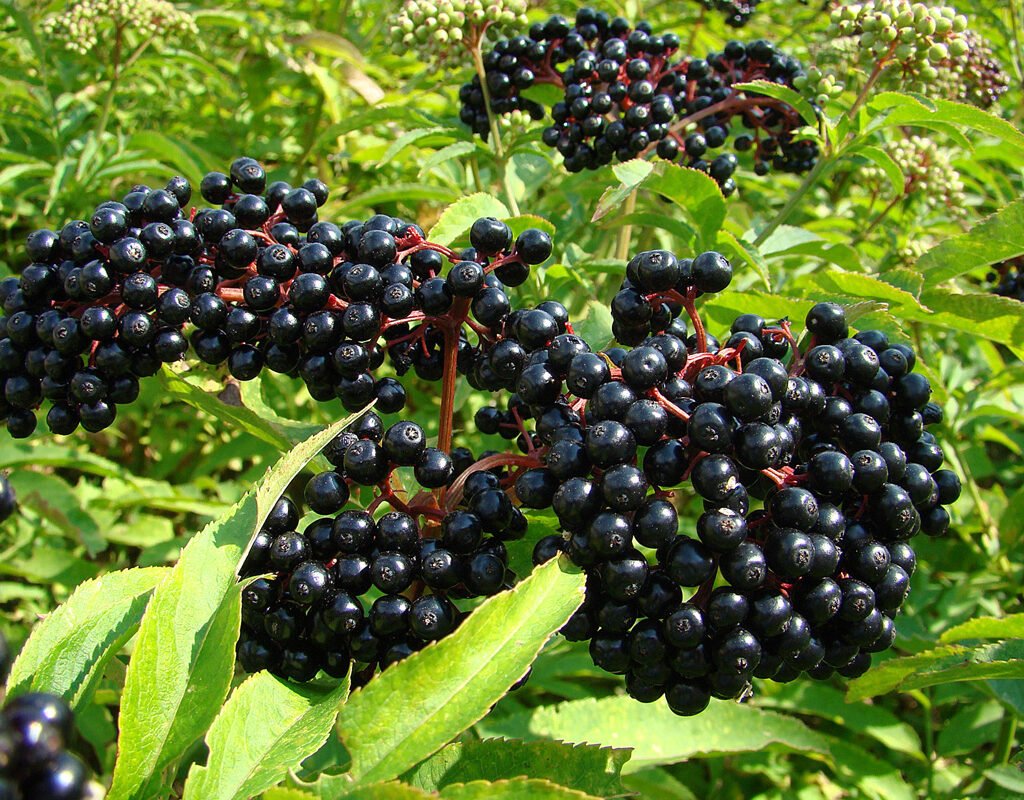
The Black Lace Elderberry is a deciduous shrub that belongs to the viburnum family (Adoxaceae). It’s a cultivar of the European elderberry (Sambucus nigra), bred for its unique ornamental foliage and showy flowers.
Unlike its wild relatives, which are known primarily for their medicinal and culinary berries, Black Lace Elderberry is cherished for its deeply cut, almost fern-like leaves that resemble the foliage of Japanese maple trees. The color—an intense purplish-black—contrasts spectacularly with the large clusters of soft pink flowers that appear in early summer.
At maturity, this shrub typically reaches 6 to 8 feet tall and wide, forming a dense, bushy habit perfect for hedges, mixed borders, or as a striking standalone specimen in the garden.
Why Gardeners Love the Black Lace Elderberry
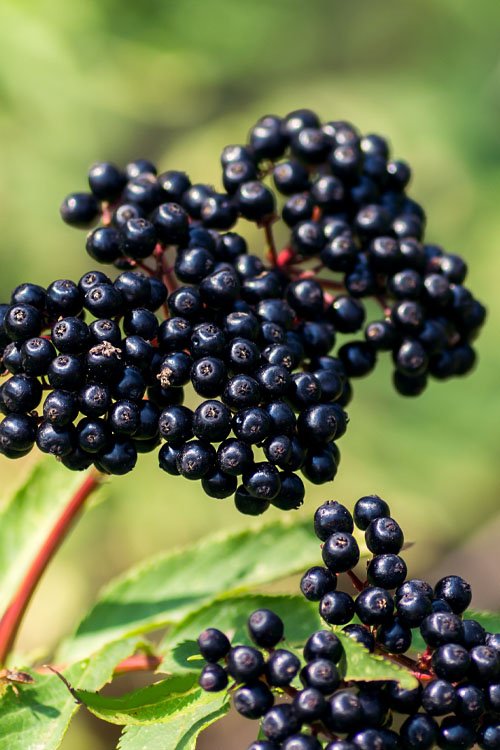
This plant’s popularity has soared in recent years—and for good reason. Here are a few reasons why it’s become a landscape favorite:
- Unmatched Ornamental Beauty:
The finely cut, dark foliage provides dramatic contrast against green plants and bright flowers, making it a centerpiece in any garden. - Showy Flowers and Edible Fruit:
The fragrant pink flowers bloom in large, flat clusters in late spring to early summer, followed by dark purple-black berries that attract birds and pollinators—and can even be used in cooking or elderberry syrup. - Easy to Grow and Low Maintenance:
It’s hardy, adaptable, and tolerant of a wide range of soil types and climates. Once established, it requires minimal care. - Cold-Hardy and Versatile:
Suitable for USDA Zones 4–7, Black Lace Elderberry thrives in both cool and temperate regions. - Deer-Resistant and Pollinator-Friendly:
The plant naturally resists browsing animals and draws beneficial insects like bees and butterflies.
When you see a mature Black Lace Elderberry in “full glory,” you understand why it’s named so—it looks like a living piece of art, combining the grace of fine foliage with the vibrancy of blooming color.
Ideal Growing Conditions
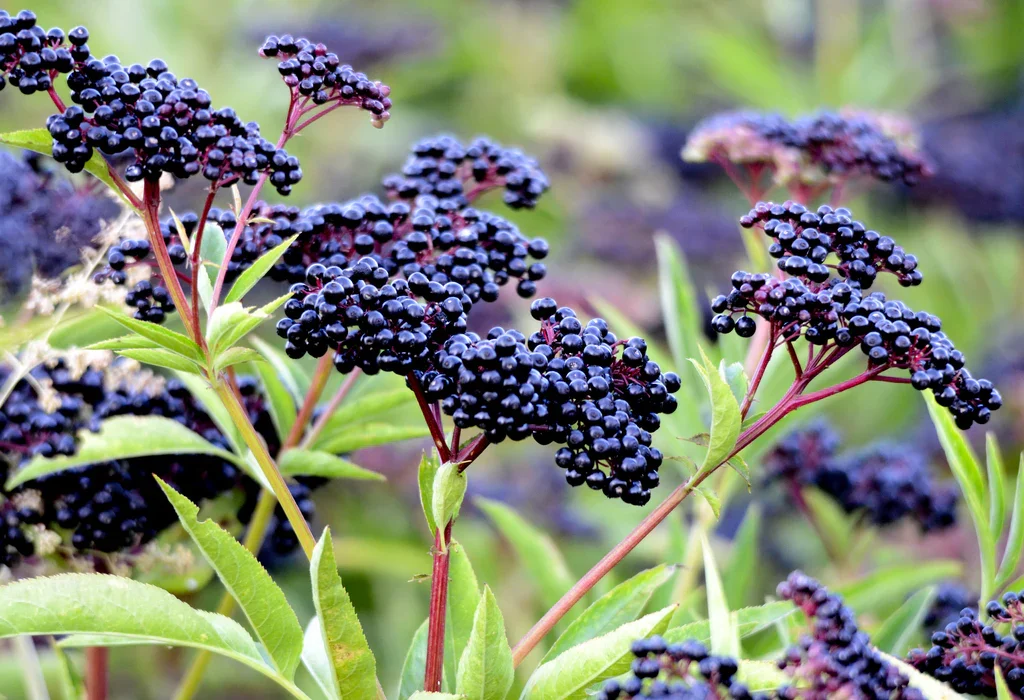
To keep your Black Lace Elderberry looking its best, it’s important to provide the right growing environment.
Sunlight:
- Prefers full sun to partial shade.
- Full sun brings out the richest foliage color. In too much shade, leaves may turn greener and lose their deep black tone.
Soil:
- Adapts to most soil types, including clay, loam, and sandy soils.
- Prefers moist, well-drained soil rich in organic matter.
- Slightly acidic to neutral pH (5.5–7.0) is ideal.
Water:
- Regular watering helps maintain lush foliage, especially during dry spells.
- Once established, it’s moderately drought-tolerant but performs best with consistent moisture.
Temperature:
- Hardy to -30°F, this plant handles cold winters well.
- In hot climates, provide afternoon shade to protect from heat stress.
Planting Black Lace Elderberry
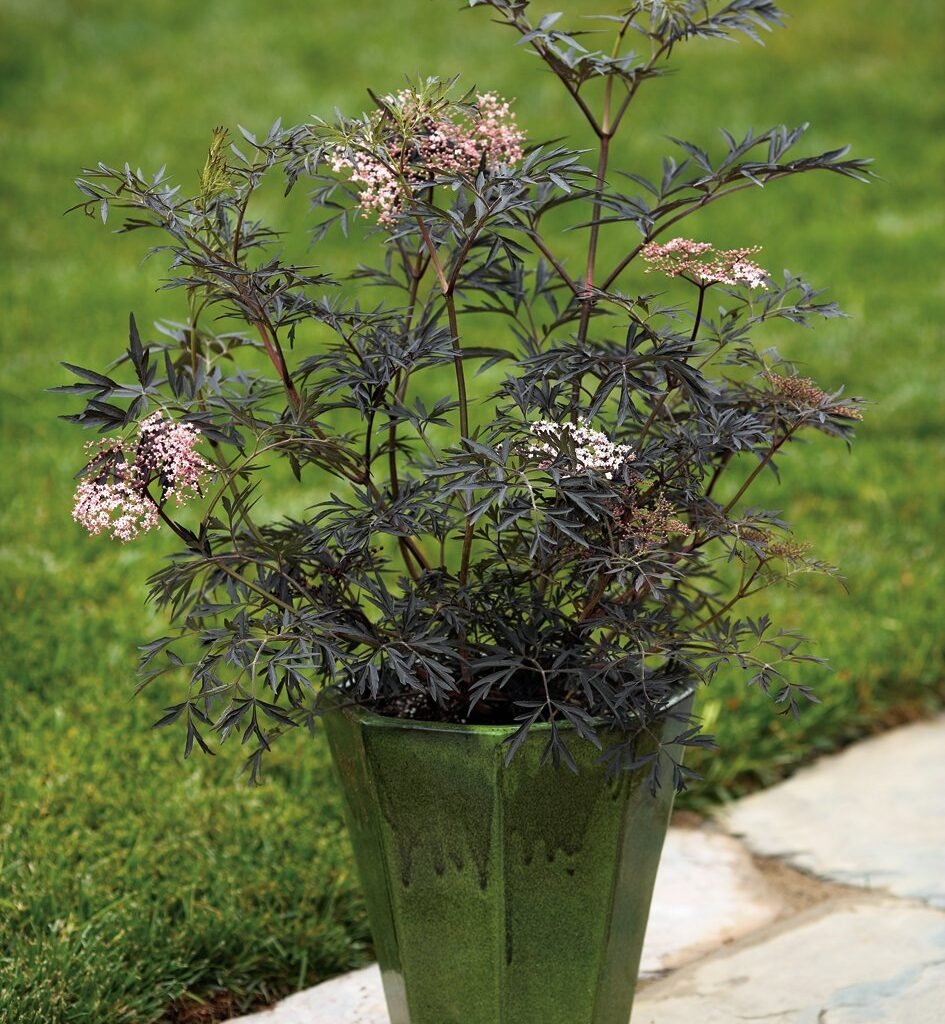
1. Choosing the Right Spot:
Pick a location where your shrub can shine—somewhere it can grow freely without being crowded by taller plants. It makes an excellent background plant in perennial borders or a striking focal point in front yards.
2. Soil Preparation:
Amend the soil with compost or well-rotted manure to improve fertility and structure. If your soil is heavy clay, mix in sand or perlite to improve drainage.
3. Planting Steps:
- Dig a hole twice as wide as the root ball and just as deep.
- Remove the shrub from its container, loosen the roots gently, and place it in the hole.
- Backfill with soil, firming it gently around the roots.
- Water thoroughly and mulch around the base to conserve moisture.
4. Spacing:
If planting multiple shrubs for a hedge, space them about 6 to 8 feet apart to allow for mature growth and air circulation.
Watering and Feeding
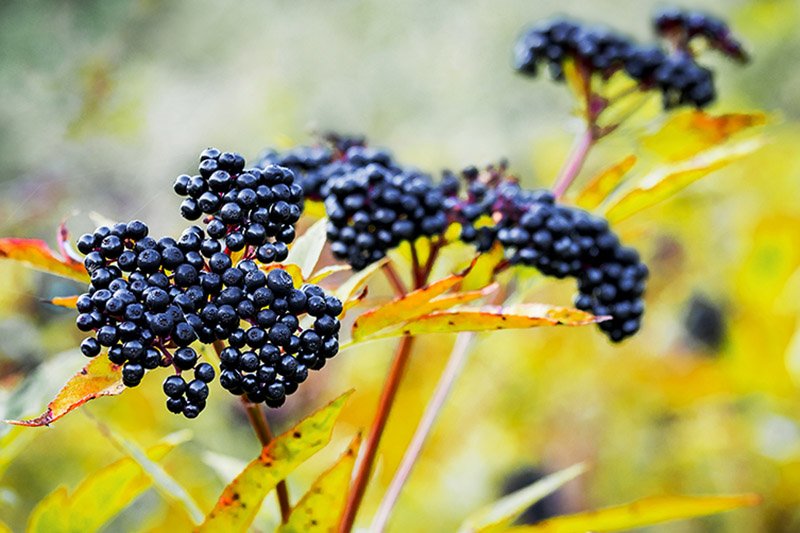
While the Black Lace Elderberry is not overly demanding, proper watering and nutrition help it reach its full potential.
- Watering Schedule: Keep soil consistently moist, especially during the first growing season. Once established, water weekly during dry periods.
- Mulching: Apply a 2–3 inch layer of mulch around the base to regulate temperature and retain moisture.
- Feeding: Fertilize in early spring with an all-purpose, slow-release fertilizer or compost. Avoid high-nitrogen fertilizers, as they promote leafy growth over flowers and berries.
Pruning and Maintenance
Pruning helps shape your elderberry and encourages vigorous growth and flowering.
When to Prune:
- Best done in late winter or early spring before new growth begins.
How to Prune:
- Remove any dead, weak, or crossing branches.
- Thin out older canes to encourage new shoots.
- For a smaller shrub, cut back by one-third each year.
- To rejuvenate an overgrown plant, cut it down to 12 inches from the ground—it will regrow vigorously the following season.
Tip: If you want berries, avoid cutting off all the flowering stems—flowers appear on the previous year’s growth.
Companion Planting Ideas
The dramatic dark foliage of the Black Lace Elderberry looks stunning when paired with plants that contrast in color and texture.
Great Companions Include:
- Hostas or silver-foliage plants for contrast.
- Golden-leaved shrubs like Spirea ‘Goldflame’.
- Bright perennials such as coneflowers, daisies, or daylilies.
- Grasses like Miscanthus or Fountain Grass for soft movement and texture.
This shrub also pairs beautifully with other ornamental elderberries, such as ‘Black Beauty’ or ‘Lemony Lace’, to create a dynamic, colorful hedge.
Pests and Problems
The Black Lace Elderberry is relatively trouble-free, but a few issues can occasionally arise.
- Aphids: Can cluster on young shoots—wash off with a spray of water or apply neem oil.
- Powdery Mildew: Avoid overhead watering and ensure good air circulation.
- Borers or Leaf Miners: Rare but can be managed by pruning out affected branches.
- Birds: While they love the berries, you can protect ripening clusters with lightweight bird netting.
Overall, this is a hardy and resilient plant that bounces back quickly from minor pest damage.
Flowers and Berries: Beauty with Benefits
In late spring to early summer, the Black Lace Elderberry bursts into large clusters of pale pink flowers that look like delicate lacework against the dark leaves. These flowers are not only beautiful but also fragrant and edible—you can use them to make elderflower cordial or flavor desserts.
By late summer, the flowers give way to deep purple-black berries, which are loved by birds and can also be harvested for making elderberry syrup, wine, or jam.
⚠️ Note: Raw berries and other parts of the plant can be mildly toxic if eaten uncooked. Always cook or process elderberries before consuming.
Seasonal Care
Spring:
- Apply compost and prune dead or weak wood.
- Check for pests and feed lightly with balanced fertilizer.
Summer:
- Water regularly during dry spells.
- Enjoy blooms and begin harvesting flowers for culinary use.
Fall:
- Harvest ripe berries for preserves or syrup.
- Allow foliage to display its rich autumn color before it drops.
Winter:
- Mulch around the base to protect roots in cold regions.
- Prune during dormancy for shape and health.
Landscaping Uses
The Black Lace Elderberry is incredibly versatile and fits a variety of garden settings:
- Accent Plant: As a focal point in front yards or mixed borders.
- Hedge or Screen: Plant multiple shrubs for a colorful privacy hedge.
- Wildlife Garden: Provides nectar for pollinators and berries for birds.
- Container Planting: Can thrive in large pots for patios or decks.
Its adaptability and dramatic appearance make it one of the most dynamic shrubs you can add to your landscape.
Final Thoughts
When you see a Black Lace Elderberry in full glory, it’s easy to understand its appeal. From its dark, lacy foliage to its pink floral clusters and rich fall color, this plant offers a rare blend of elegance and toughness. It’s low-maintenance, cold-hardy, and rewarding in every season—a true gem for gardeners who value both beauty and practicality.
Whether you grow it for its ornamental charm, wildlife value, or homemade syrups and wines, the Black Lace Elderberry will transform your garden into a sophisticated, nature-filled retreat.
So, if you’re looking to add a plant that delivers drama, diversity, and year-round allure, look no further than the Black Lace Elderberry—a shrub that truly lives up to its name and reputation when seen in full glory.
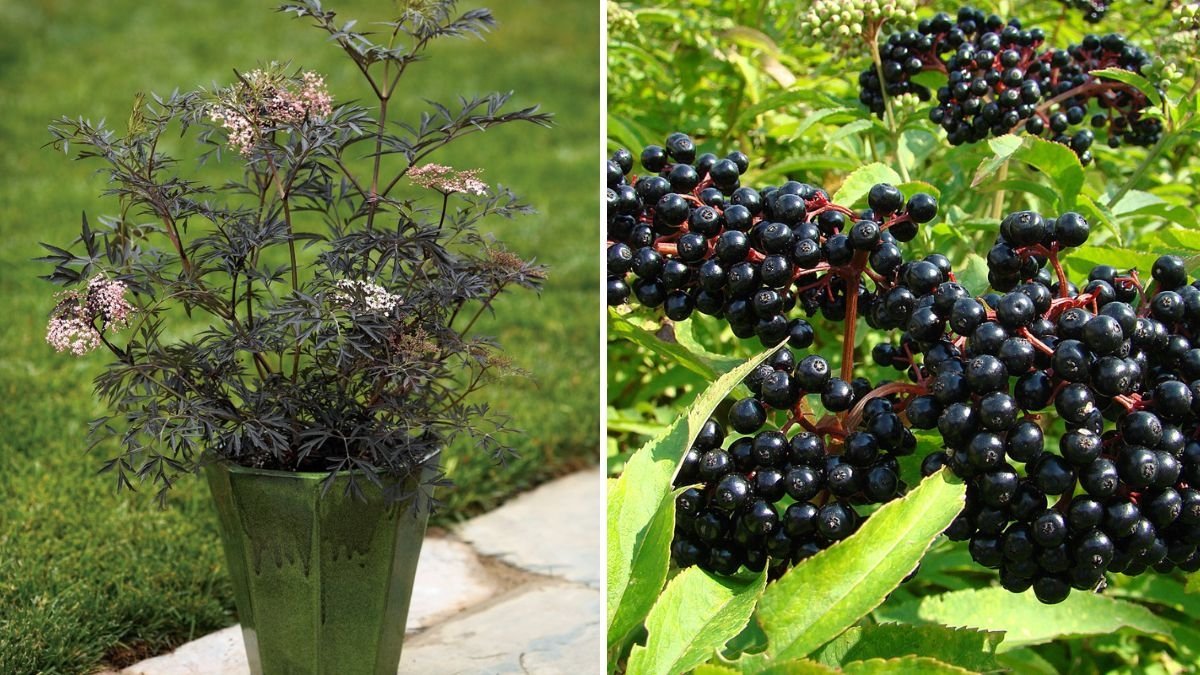
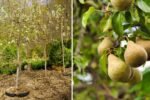

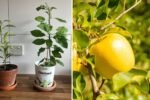
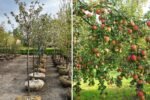

Leave A Comment